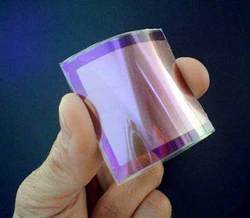Thin film solar panels are like the new kid on the block.
Everyone’s talking about them but people are keeping their distance until they get a little more information.
That awkward simile is my way of saying that thin film technology is an exciting and expanding segment of the solar power world but it’s still in its early stages.
What should you know?
Traditional solar panels use crystalline silicon as a semiconductor (this is what absorbs light and converts it to electricity).
Unfortunately, the silicon wafers that are necessary for this process are expensive.
In fact, they account for up to half of the cost of a solar panel.
The solar industry has known for a long time that for their technology to really go mainstream, it will have to make more sense to people economically.
In other words, it will have to get as cheap as fossil fuels.
How do thin film panels fit into this equation?
Well, since solar panels have to get cheaper and crystalline silicon makes up half their cost, people started looking for a way to build solar panels without crystalline silicon.

They came up with some replacements:
- Amorphous silicon (a-Si, silicon in a different form)
- Copper indium gallium (di)selenide (CIGS)
- Cadmium telluride (CdTe)
These new technologies allowed solar cells to get 100 times thinner than crystalline silicon cells.
Also, Time magazine recently pointed out that “while silicon panels need to be baked in batches…thin-film panels roll off the assembly line, as if from a printing press.”
This ability to mass manufacture solar power is what could potentially drive its cost lower than fossil fuels.
The main solar companies involved with thin-film solar panels are:
- Nanosolar (CIGS)
- Uni-Solar (Amorphous Silicon)
- Flison (CIGS)
- First Solar (CdTe)
For more information on this technology, check out our thin film solar panel interview with a top researcher in the field.
